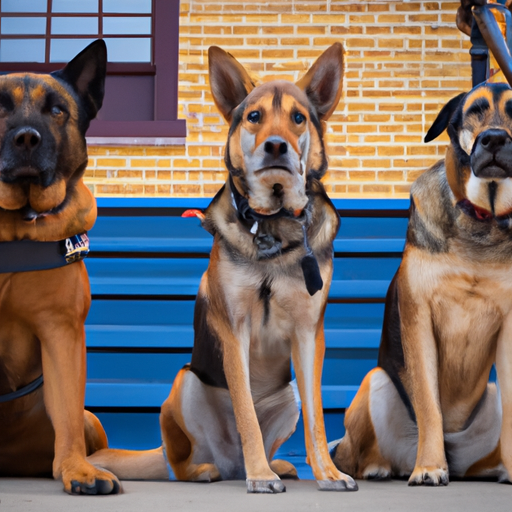Introduction
Hey there, you caring soul, you’ve often seen dogs in uniforms, haven’t you? Yes, those brave and obedient ones working alongside police officers. It’s time to delve into the world of police dogs, or K9 units as they’re often called.
1. The Breed Matters
Firstly, you might wonder if all dogs can be police dogs. Well, not exactly.
While all dogs are special in their own unique ways, certain breeds are more suited to police work due to their intelligence, strength, and sense of smell. Here are a few of them:
- German Shepherds: The most common breed you’ll find in a police unit. Known for their intelligence and versatility.
- Belgian Malinois: Similar to German Shepherds but smaller and more agile.
- Labrador Retrievers: Excellent at bomb and drug detection due to their superior sense of smell.
- Bloodhounds: Used for tracking due to their unparalleled scent-tracking abilities.
- Rottweilers: Less common but still used due to their strength and fearlessness.
2. The Training They Undergo
Now that we know about the breeds, let’s talk about the rigorous training these dogs undergo. They’re not just born police dogs, after all!
- Basic Obedience: This is the first and foremost aspect of their training. Dogs must respond to their handlers’ commands instantly.
- Endurance and Agility Training: Police dogs need to be in peak physical condition. They undergo regular fitness drills.
- Specialized Training: Depending on their roles, dogs are trained in areas such as sniffing out drugs or explosives, tracking, search and rescue, and even attacking when commanded.
3. The Roles They Play
| Role | Description |
|---|---|
| Detection | These dogs are trained to sniff out drugs, explosives, and other illegal substances. |
| Patrol | These dogs are used to deter crime simply through their presence. |
| Search and Rescue | These dogs are used to find missing individuals or to locate survivors in disaster scenarios. |
| Apprehension | These dogs are trained to safely apprehend criminals. |
4. The Bond with Their Handlers
As a caregiver, you understand the importance of a strong bond in taking care of someone. The relationship between a handler and his dog is no different. It’s a partnership built on trust, respect, and mutual care. The dog lives with the handler, forming a deep emotional bond.
5. Retirement and Adoption
After years of dedicated service, police dogs deserve a happy retirement. Some continue to live with their handlers while others are adopted into loving homes. If you are considering adopting a retired police dog, remember these dogs may require special care due to their rigorous past.
Frequently Asked Questions
Q: Can any breed become a police dog?
No, not all breeds are suited for police work. Breeds commonly used include German Shepherds, Belgian Malinois, Labrador Retrievers, Bloodhounds, and Rottweilers.
Q: How long do police dogs serve?
Typically, police dogs serve for about 6-9 years, but this can vary depending on the dog’s health and job demands.
Q: Can I adopt a retired police dog?
Yes, many retired police dogs are available for adoption into loving homes. However, they may require special care due to their past work.
Q: What is the most common type of police dog?
The German Shepherd is the most commonly used breed for police work due to its intelligence and versatility.
So, that’s it! Now you know what type of dogs are police dogs. They are not just pets, but heroes who work tirelessly to keep our communities safe. Let’s appreciate their service and give them the love they deserve.



